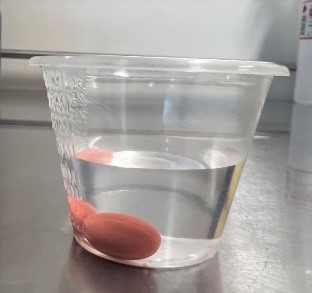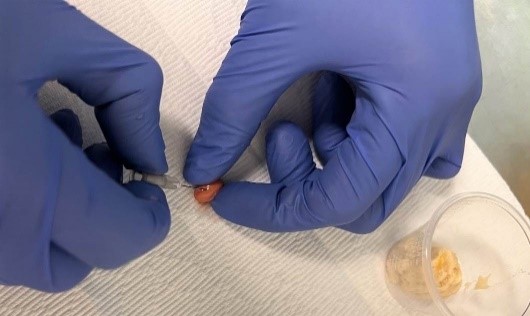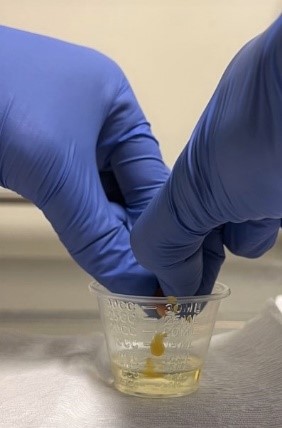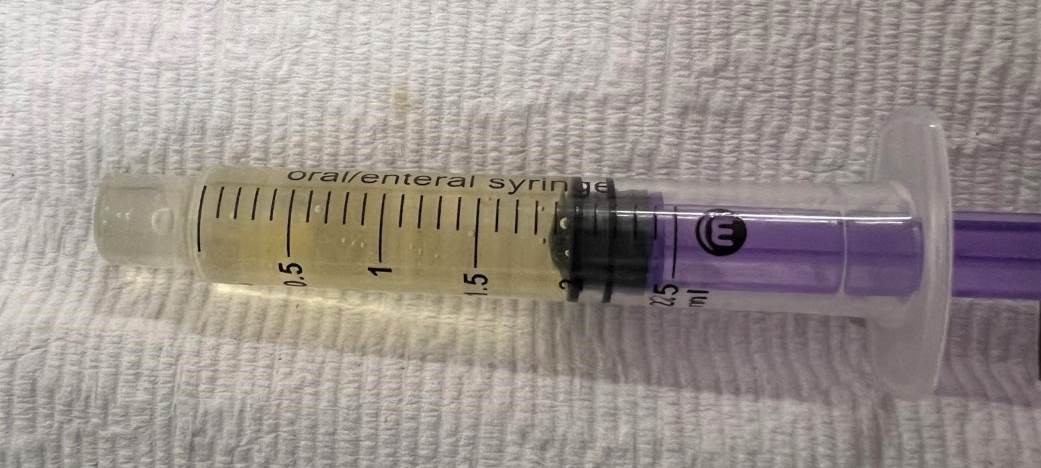Isotretinoin for Neuroblastoma
Isotretinoin (ai-sow-tret-i-noyn) belongs
to a group of medicines called retinoids, which are similar to vitamin A. Isotretinoin
is used to treat some types of cancer such as neuroblastoma. Isotretinoin is
also used to treat severe acne but this information sheet is for patients using
isotretinoin for neuroblastoma. Isotretinoin is sometimes called cis-retinoic
acid.
Isotretinoin capsules are made by different companies, and
different brands of the same medicine have different names (e.g. Roaccutane®).
Important information
- Isotretinoin
causes birth defects and must be avoided in pregnant women
- Sexually
active females must have a negative pregnancy test prior to starting treatment
and use effective contraception one month prior to starting isotretinoin,
during treatment and for 1 month after stopping isotretinoin
- Patients
should not take any vitamins or supplements containing vitamin A while taking
isotretinoin
- While
taking isotretinoin, patients should avoid certain types of antibiotics called tetracyclines
(check with your doctor or pharmacist)
- Avoid
alcohol while taking isotretinoin
Giving your child isotretinoin
Isotretinoin is available as 10 mg and 20 mg capsules, there
is no liquid form available.
Your child’s doctor will work out the amount (the dose) of isotretinoin
that is right for your child. The dose will be shown on the medicine label.
- Isotretinoin should be
given with fatty food or milk
- Capsules can be swallowed
whole (preferred) or chewed
- If your child cannot
swallow or chew the capsules, see instructions below in the ‘Common questions
our staff are asked’ section
- Some patients may need two
strengths of isotretinoin to make up their dose, read the directions on the
label carefully
- Parents or caregivers
who are pregnant or planning to become pregnant should not handle this medicine and should wear gloves when handling patient waste (urine,
faeces or nappies) – speak to a pharmacist or doctor for more information
When should I give isotretinoin?
Isotretinoin capsules are usually given twice a day, morning
and night, for 14 days in a row followed by a break of 14 days.
If more than one person usually gives your child their
medication, make sure that you tell each other and write down doses given so
that you don’t give extra doses by mistake.
Possible side effects
Medicines sometimes have side effects.
Some side effects will go away with time, or come back after the dose has been
changed. Speak to your child’s doctor if you are worried about any of the
following possible side effects of isotretinoin:
- Drying
of the skin, lips, nose and eyes
Moisturisers and lip balms with vitamin E should be used during
isotretinoin treatment. Lubricating eye drops or ‘artificial tears’ may also be
used for patients with dry eyes. Petroleum jelly can be used to soften the
lining of the nose if needed
Your child’s skin may become more prone to sunburn while taking
isotretinoin – always apply sunscreen, wear a hat and protective clothing when
outdoors
- Changes
in liver function
Blood tests will be
taken to monitor your child’s liver function
Some patients who take isotretinoin can
feel sad or depressed – speak to your child’s doctor if you think your child is
depressed or has thoughts/attempts at self-harm
- Changes to alertness or vision
Some people experience changes to their
alertness, eyesight or night vision. Patients are advised to avoid driving or
operating heavy machinery until they know how the medicine affects them.
There may be other side effects that are
not listed in this fact sheet. If you notice anything unusual or are worried
about your child, contact your doctor or pharmacist.
What
to do if a dose is missed
Skip
the missed dose and continue giving isotretinoin at normal times.
What to do if you give too much isotretinoin
If you think you
may have given your child too much isotretinoin, call the Poisons Information
Centre on 13 11 26 as soon as possible, even if your child shows no symptoms. In
the case of an emergency, call an ambulance (000) or take your child to the
nearest hospital emergency department. Have the medicine container or
packaging with you, even if it is empty, as this information is useful.
General medicine advice
- Store isotretinoin out of children’s reach
and always keep medicine in the container or box that it came in.
- Give isotretinoin
only as directed and only to the person whom the medicine was prescribed for.
Never give it to another person as this could do harm.
- If your child needs surgery, you must tell
the anaesthetist that your child is taking isotretinoin.
- Store isotretinoin capsules at room
temperature, in a cool, dry place away from heat or direct sunlight, below 250C.
- If your child is no longer taking
isotretinoin, return any unused medicine to your local pharmacy or hospital for
disposal
Key points to remember
- Isotretinoin should be
given with fatty food or milk
- Moisturisers
and lip balms with vitamin E should be used during isotretinoin treatment
- Your
child’s skin may become more prone to sunburn while taking isotretinoin –
always apply sunscreen, wear a hat and protective clothing when outdoors
- Isotretinoin
causes birth defects and must be avoided in pregnant women
For more information
Common questions our staff are asked:
What if my child cannot swallow or chew
the capsules?
Follow
the steps below. Parents or caregivers who
are pregnant or planning to become pregnant should not handle this medicine –
speak to a pharmacist or doctor for more information.
You will
need:
- Disposable
gloves
- Medicine
cup or small glass/cup (to be used for this purpose only)
- Spoon (to
be used for this purpose only)
- A needle
and sharps bin (if the softened capsule cannot be swallowed)
- Paper
towel
1. Put gloves on and lay paper towel down to create a clean area.
2. Place the capsule(s) in a small glass of warm tap water (not boiling) or milk. The liquid may turn red – this is ok.

3. Some children may be able to chew or swallow the softened capsule. It can also be placed on a spoon with some fatty food (e.g. milk, peanut butter, pudding or ice cream) and eaten.
4. If this is not possible, carefully puncture the capsule with a needle and squeeze the contents over a spoon with a small amount of fatty food. The capsule will be slippery, handle with care.

5. If administration via a feeding tube is required, puncture the capsule as above and mix the contents with a small amount of olive oil. Draw this up into an oral/enteral syringe (purple plunger). Flush the tube with 1 mL of olive oil after the dose. If not continuing a feed, flush the feeding tube with 5-10 mL of water.


6. Place needle and empty capsule in the sharps bin. Dispose of gloves and paper towel. Wash any cups or spoons used in hot, soapy water and set aside for the next dose of isotretinoin.
Developed
by The Royal Children's Children’s Cancer Centre Pharmacy and Medication Safety
Committee. We acknowledge the input of RCH consumers and carers.
Developed August 2022.
Kids
Health Info is supported by The Royal Children’s Hospital Foundation. To
donate, visit www.rchfoundation.org.au